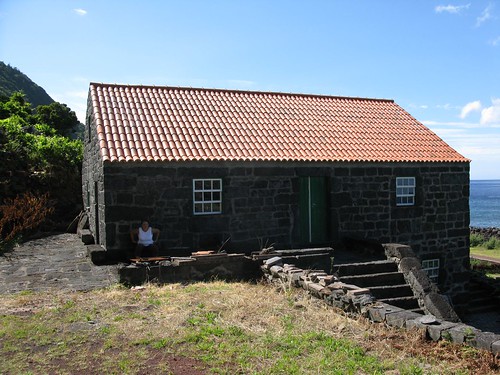Salem Towne House
Image by pvdEric
From its hipped roof lighted by rows of monitor windows to its elegant doorway, the symmetry and careful architectural detailing of this house mark it as the work of a skillful country builder. In fact, virtually all of the finish on the house—the windows, cornices, moldings, and over-mantels—can be found illustrated in the 1792 American edition of William Pain’s Practical Builder, a guidebook of designs for English carpenters. Careful study of the woodwork reveals how the builder mixed and matched elements from the multiple options shown in Pain’s illustrations. Within and without, this house was built to impress its visitors.
Center villages often boasted several such handsome residences, reflecting the taste of prosperous leaders who brought new ideas and fashions to rural society. This was the home of the family of Salem Towne Jr. of Charlton, Massachusetts, who inherited the house at the death of his father in 1825. Salem and Sally Towne headed a well-to-do establishment, but still sometimes worked alongside their hired help to manage the farm, dairy, and the house. Their household was a large and complicated one that included children—seven of their nine were living with them in 1830—farm laborers, hired women, and sometimes relatives who were visiting or needed a place to stay.
The house and its furnishings reflect the parents’ tastes and interests, and the bustling life that they oversaw. There are four rooms on each floor, on either side of a wide carpeted hallway—a more formal design that sets this dwelling apart from the museum’s other residences. The house’s furnishings are elegant and expensive by the standards of the countryside. In their choice of carpets, wallpaper, furniture, curtains, and ceramics, the Townes have blended imports with New England-made goods, and combined items that might have passed down through the family with the fashions of the 1820s and 1830s.
Like his father, Salem Towne Jr. was a man of business, a land surveyor, a Justice of the Peace, and an active figure in politics, as well as an innovative, “progressive” farmer. The furnishings of the sitting room reflect some of these pursuits.
Of the four bedchambers upstairs, two have been created by dividing a large space that was originally built as a ballroom and used until 1806 for Masonic meetings. Probably reflecting its original use for Masonic rituals, the room has striking painted murals, partially preserved from that early time, depicting an exotic landscape.
The ground-floor kitchen boasts a sanded floor, a characteristic early 19th-century way of keeping things clean. There is also a cast-iron stove, a good example of the first American domestic appliance. Widely advertised as both making cooking easier and saving on fuel, stoves were coming into use in prosperous rural homes during the 1830s.
Down the stairs is another kitchen for rough work, and the dairy room exhibit, which displays the equipment and utensils used in making butter and cheese. This exhibit explains the economic aims of a progressive farmer and tells why the dairy was a crucial part of Salem and Sally Towne’s farm. It interprets changing markets and innovations aimed at higher productivity, while a video presentation describes the dairywoman’s work step by step. To the north of the house is the Townes’ farmyard with barn, stonewalled enclosures, milking stalls, and sheep sheds.
On a small parcel of land next to the barnyard lies the Townes’ apple orchard, and just beyond it sits the Cider Mill. Because only a prosperous few farmers in each community owned cider mills, they customarily rented them to their neighbors after their own cider making was finished. In September and October, cider mills like this one were at work throughout New England, as their horse-powered crushers and hand-operated screw presses converted most of the region’s apple crop into cider. New Englanders traditionally barreled cider as a beverage for household consumption and left it to turn “hard” or alcoholic. But after 1830, cider mills were not as busy as they had been earlier. Under the impact of temperance reform, both cider consumption and the acreage of farms planted to orchards were diminishing.
The formal garden at the Towne House, with its symmetrical layout and abundance of blooms, suggests the growing interest in ornamental gardening of many prosperous New England families.
Gilda and Her Weekend House
Image by kxande2
The house is new but is made in the traditional manner and design (including a wood oven that Gilda doesn't know how to use, yet). They are furnishing it was antique furniture. It is quite impressive and part of a trend amongst some.
No comments:
Post a Comment